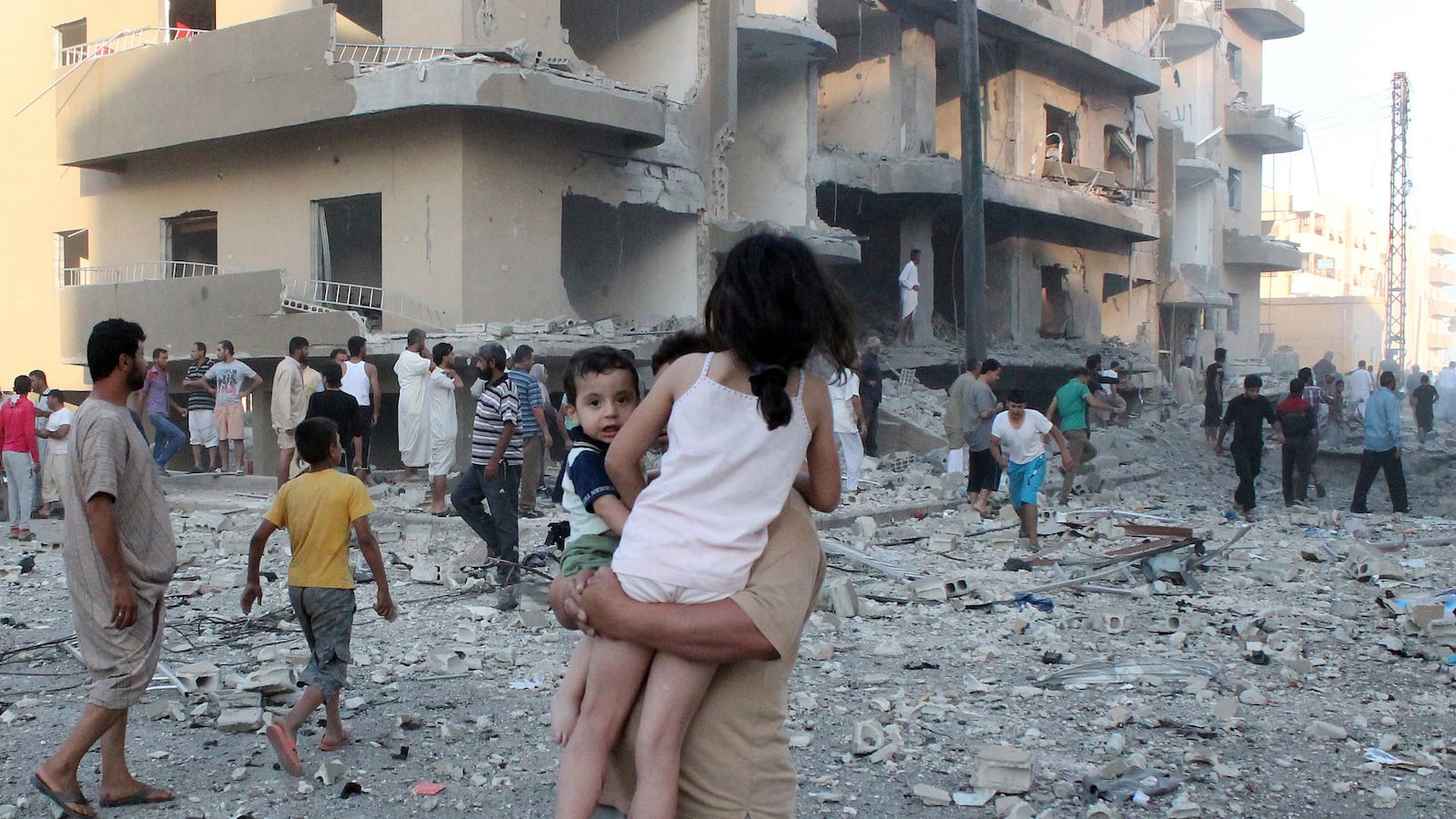Two Syrian watch groups charged on Thursday that U.S.-led coalition strikes against the so-called Islamic State had killed as many as 38 civilians over a three-day period, the highest reported death toll in months. The reports come as some Obama administration officials have pushed for looser rules of engagement that may help kill more Islamist fighters, but that put civilians in greater jeopardy.
The allegations center on a series of strikes the coalition has conducted over the past few days around the eastern city of Hasakah and its surrounding province, also called Hasakah, where the Islamic State, widely known as ISIS, is largely in control and is attacking the U.S.-backed Syrian Democratic Forces.
ISIS has repeatedly attacked the forces at their headquarters building and checkpoints, launching explosives or using bombs. In recent weeks, the Syrian Democratic Forces have also been attacking ISIS, backed by U.S. air support, in a bid to reclaim the province.
Airwars.org, a website that collects accounts from Syrians and Iraqis on the ground, said that it received reports that as many as 40 civilians had been killed in three strikes over a three-day period beginning Feb. 15.
The Syrian Observatory for Human Rights, which also depends on local reports, said that 38 civilians had been killed in Hasakah, including three children, over the same 72-hour period. The group also concluded that 35 ISIS fighters were killed in those strikes.
In one instance, on Feb. 15, residents reported that civilians were killed while waiting in a bread line at a bakery. Airwars.org named eight men reported to have been killed in the strike and noted that the coalition had announced in a press release that it had struck an “ISIL building” near Hasakah the same day of the alleged hit on the bakery. ISIL is the U.S. government’s preferred acronym for the Islamic State or ISIS.
Charges that U.S. airstrikes are killing civilians aren’t new, and these are the latest in a pattern. Independent groups say they hear an increased number of allegations of civilian casualties that correlates with increased coalition strikes in a particular area.
In July, for example, there was a surge of reported civilian deaths as the coalition focused its strike campaign in Raqqa, ISIS’s de facto Syrian capital. Groups also said they heard more accusations as the coalition was routing ISIS from the Iraqi city of Ramadi last fall.
“In our experience, these civilian casualties spikes can track quite closely with spikes in coalition activity,” Chris Woods, the director of the monitoring group Airwars.org, told The Daily Beast.
Russian air forces are also active in Syria and have been blamed for civilian deaths. But independent observers note there is no indication that Russia has been bombing Hasakah province in recent days. Indeed, Russia has denied striking the areas. And there have been no allegations by civilians of Russian strikes around Hasakah.
“All the indications are—both from Russian officials and the civilian casualty reports we have received—that Russia hasn’t been bombing in Hasakah in February,” Woods explained.
There is, however, a Russian presence in several other cities around Syria. Russian strikes appear to be aimed at groups outside of the Syrian Democratic Forces that threaten the regime of Syrian President Bashar al-Assad, particularly around Aleppo.
But if local reports are any measure, the Russian airstrikes have been far more deadly for civilians throughout Syria than the U.S.-led coalition strikes. Residents have reported 208 civilian deaths by Russian airstrikes in February alone, Woods said.
By comparison, Airwars.org received 850 allegations of civilian deaths from coalition strikes for the duration of the coalition war on ISIS, which began with airstrikes in August 2014.
The U.S. military has confirmed it has killed 29 civilians in all and is committed to mitigating civilian casualties. Officials say that U.S. forces routinely abort strikes rather than risk civilian casualties. But with no ground troops at nearly all airstrike sites, it is increasingly difficult for the military to assess, with precision, the effect of those bombings.
Moreover, since Iraqi forces retook Ramadi last December, Obama administration officials have been pushing for a more aggressive campaign against ISIS. Some argue the rules to prevent civilian casualties are too restrictive and should be loosened to build on the momentum that came with the fall of Ramadi and as Iraqi forces and their U.S. trainers look toward the next prize—retaking the much larger city of Mosul.
U.S. Central Command, which leads the U.S. military in the Middle East, is investigating the latest allegations of civilian deaths to determine if they are credible and conduct a proper military investigation, Lt. Gen. Charles Q. Brown Jr., commander, U.S. Air Forces Central Command, told Pentagon reporters during a briefing Thursday.
CENTCOM does not release its findings on civilian deaths until months after airstrikes have occurred.
Brown said he could not say whether the coalition was conducting strikes at the same time residents were alleged to have come under attack, but he noted that coalition forces “have been striking that area for the past several days.”
The residents of Hasakah have been under relentless attack. Last month, ISIS fighters allegedly held thousands of residents hostage in the city of Shaddadi, which is part of Hasakah province, to prevent residents from fleeing.
And on Monday, ISIS reportedly beheaded in public Saleh al-Rahim, 48, in Hasakah province for not paying his taxes to ISIS, which the group considered an insult to its caliphate.






